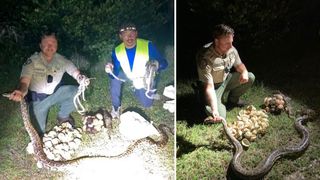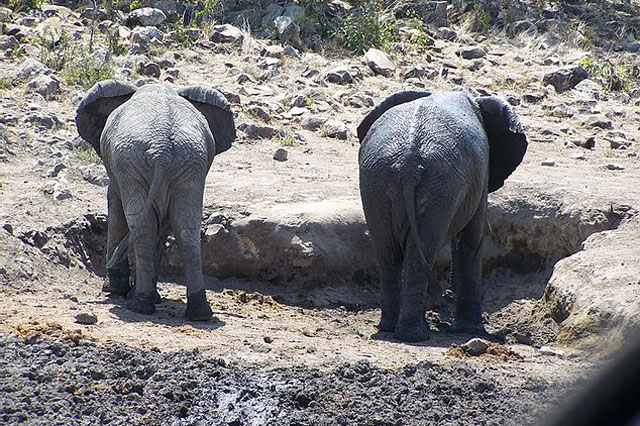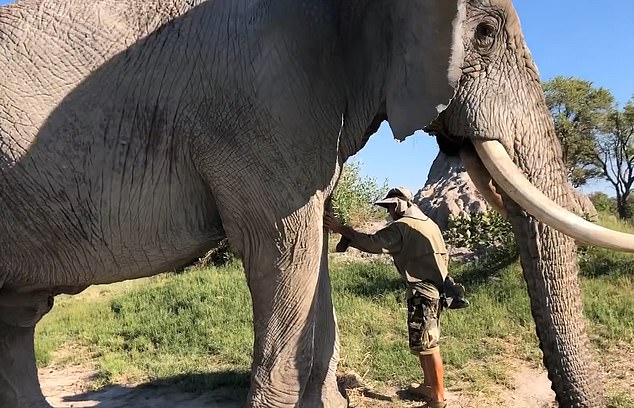Under the cover of darkness, two wildlife officials raided an invasive python’s nest in a South Florida swamp and successfully wrestled 19 wriggling hatchlings and their mother into a bag and out of the protected habitat. The next day, one of the officials captured a second breeding female — measuring an astounding 17.5 feet (5.3 meters) long — from the exact same spot.
Burmese pythons (Python bivittatus) were first introduced to Florida in the 1970s and have since established large breeding populations in southern regions of the state. The humongous snakes usually grow to be about 6 to 9 feet (1.8 to 2.7 m) long, although recently, officials captured a nearly 18 foot (5.4 m) long python near Naples that weighed 215 pounds (97 kilograms), Live Science previously reported. With few natural predators in Florida, the invasive snakes pose a threat to many native birds, mammals and even alligators, according to the Florida Fish and Wildlife Conservation Commission(opens in new tab) (FWC).

Florida Fish and Wildlife Conservation Commission Officer Matthew Rubenstein (right) holds the neck of a female Burmese python. He and python removal contractor Alex McDuffie (center) found the python on her nest in a preserve in South Florida. (Image credit: Florida Fish and Wildlife)
Burmese pythons (Python bivittatus) were first introduced to Florida in the 1970s and have since established large breeding populations in southern regions of the state. The humongous snakes usually grow to be about 6 to 9 feet (1.8 to 2.7 m) long, although recently, officials captured a nearly 18 foot (5.4 m) long python near Naples that weighed 215 pounds (97 kilograms), Live Science previously reported. With few natural predators in Florida, the invasive snakes pose a threat to many native birds, mammals and even alligators, according to the Florida Fish and Wildlife Conservation Commission(opens in new tab) (FWC).
For this reason, the FWC and other organizations use a number of strategies to find, capture and remove pythons from South Florida ecosystems; this includes hiring contractors to survey snake-infested swampland and capture any pythons they find.
Alex McDuffie is one such contractor, hired by the South Florida Water Management District. Just before midnight on Monday (July 11), McDuffie spotted a newly-hatched Burmese python youngster in the Big Cypress National Preserve, a 729,000-acre (2,950 square km) freshwater swamp ecosystem located in Ochopee, Florida, north of Everglades National Park. While tracking the snake, he ran into FWC Officer Matthew Rubenstein, who was patrolling the park and promptly joined the snake hunt, according to a statement(opens in new tab) from the Florida Fish and Wildlife Conservation Commission.
The two soon discovered a Burmese python nursery, where a large female sat coiled upon 23 unhatched eggs and 18 python hatchlings. Another python nest lay nearby, they noted, and when McDuffie returned to the site the next day, he found a second breeding female and removed it from the habitat.
“The pythons and unhatched eggs were removed from the sensitive habitat, helping to prevent future negative impacts to our native wildlife,” the FWC announced in a Facebook post(opens in new tab) shared July 14. “Great job, Officer Rubenstein and Alex!”
In the Facebook post, the FWC also included a reminder about the upcoming Florida Python Challenge(opens in new tab), an annual 10-day python removal competition that will run from August 5 to 14 this year. Participants can register as novices or professionals, with professionals being experienced people who are paid to remove pythons from the Everglades. In both categories, participants can win cash prizes for capturing the most or longest pythons, and additional awards will be provided for veterans and active members of the armed services.
More than 600 people took part in last year’s Python Challenge, and collectively, they removed 223 Burmese pythons from the Everglades, according to the FWC(opens in new tab).








